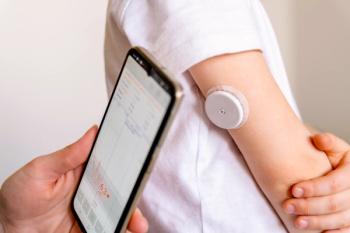
Gamida Cell Submits Biologics License Application for Omidubicel to the FDA
The drug is being evaluated as the first potential allogeneic advanced cell therapy donor source for patients with blood cancers in need of a transplant.
Gamida Cell has completed the rolling biologics license application (BLA) submission to the FDA for omidubicel for the treatment of individuals with
Omidubicel is an advanced cell therapy candidate that was developed as an allogeneic hematopoietic stem cell transplant for individuals with blood cancer. It is the first stem cell transplant donor source to receive breakthrough therapy designation from the FDA.1
Additionally, it has received orphan drug designation in the European Union and the United States.1
“The BLA submission marks an important milestone for both Gamida and the transplant community, as omidubicel has the potential to be the first approved advanced cell therapy product for allogeneic stem cell transplantation,” Julian Adams, PhD, CEO of Gamida Cell, said in the statement.1
“Completion of this BLA submission is a key inflection point in our mission to deliver a new treatment option for patients with blood cancers. We look forward to working closely with the FDA to bring this potentially important therapy to patients,” Adams said.1
The FDA has 60 days to determine whether the BLA for omidubicel is acceptable for filing.1
The BLA is supported by the results of a phase 3 study published in Blood, the journal of the American Society of Hematology. The study met its primary endpoint of the median time to neutrophil engraftment in individuals with hematologic malignancies undergoing allogeneic bone marrow transplant, with patients receiving omidubicel having a median time of 12 days compared with 22 days for the umbilical cord blood graft group.1
In the key secondary endpoints of the study, approximately 55% of individuals receiving omidubicel achieved platelet engraftment by day 42 compared with approximately 35% for the comparator.1
Additionally, the rate of infection was significantly reduced, with the cumulative incidence of first grade 2 or grade 3 bacterial or invasive fungal infection for individuals randomized to omidubicel being 37% compared with 57% for the comparator.1
Hospitalization in the first 100 days after transplant was significantly reduced with a median number of days alive and out of hospital for individuals randomized to omidubicel was 61 days compared with 48 days for the comparator.1
Furthermore, 1-year post-transplant data showed sustained clinical benefits with omidubicel as demonstrated by a significant reduction in infectious complications and reduced non-relapse mortality. There was no significant increase in increases in graft-versus-host-disease rates or the relapse rate.1
The results showed that transplantation after an individual received omidubicel had fewer bacterial and viral infections and less time in the hospital, investigators said.2
Omidubicel was generally well tolerated in the phase 3 study.1
Investigators reported that the incidence of treatment-emergent serious adverse events were similar in both arms, with approximately 40% in the omidubicel group and 41% for the comparator.2
References
1. Omidubicel has orphan drug designation and breakthrough therapy designation. Gamida Cell. News release. June 2, 2022. Accessed June 3, 2022. https://investors.gamida-cell.com/news-events/press-releases/news-release-details/gamida-cell-completes-rolling-biologics-license
2. Horwitz ME, Stiff PJ, Cutler C, Brunstein C, et al; Omidubicel vs standard myeloablative umbilical cord blood transplantation: results of a phase 3 randomized study. Blood. 2021;138(16):1429-1440. doi: 10.1182/blood.2021011719
Newsletter
Stay informed on drug updates, treatment guidelines, and pharmacy practice trends—subscribe to Pharmacy Times for weekly clinical insights.




















































































































































































































